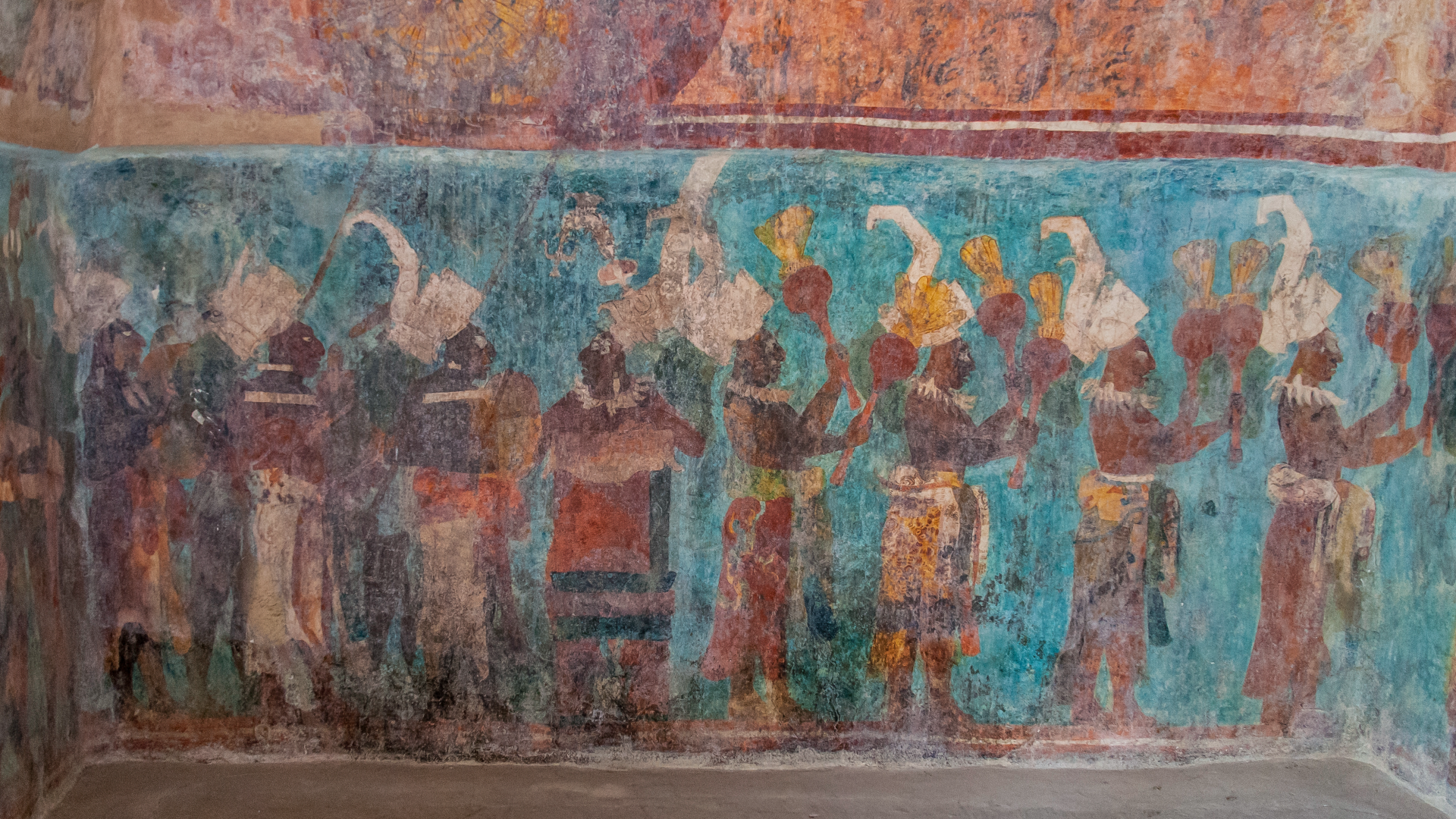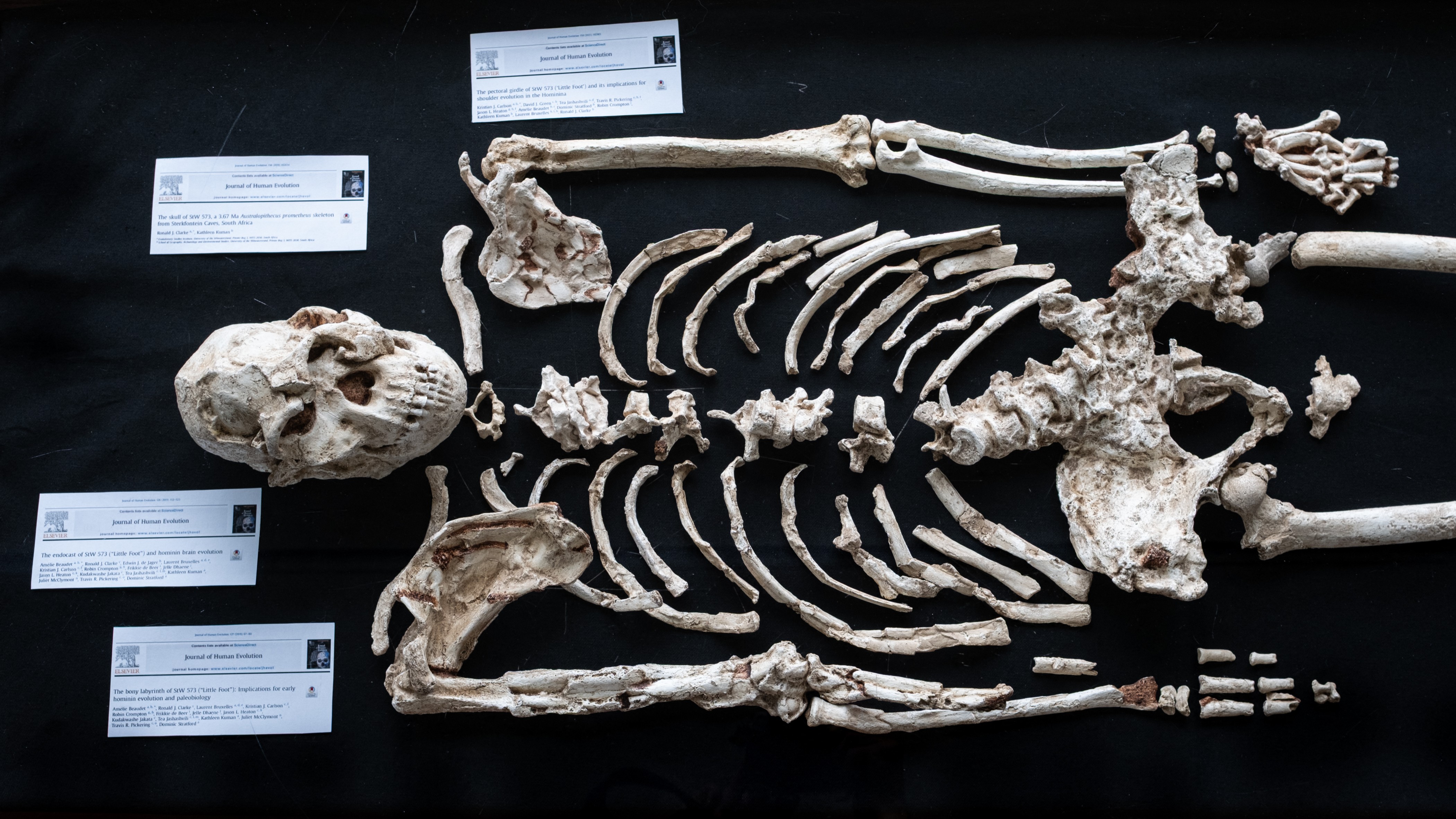Secret of ancient Maya blue pigment revealed from cracks and clues on a dozen bowls from Chichén Itzá
The question of how the super-blue paint was made now has a second answer.

A Sherlock Holmes-style investigation has revealed the ancient method for the stunning pigment known as Maya blue — and it's different from a previous method uncovered nearly 20 years ago by the same researcher.
Maya blue, discovered by modern researchers in 1931, is not an easy pigment to make. Echoing the color of an azure sky, the indelible pigment was used to accentuate everything from ceramics to human sacrifices beginning in the Late Preclassic period (300 B.C. to A.D. 300).
Maya blue is a highly unusual pigment because it is a mix of organic indigo and an inorganic clay mineral called palygorskite. The rich blue color does not fade over time; it has maintained its vibrancy even in the harsh tropical forests of southern Mexico and Guatemala where the Maya Maya civilization thrived.
For decades, scientists tried to decode the precise method of manufacturing Maya blue, but they did not succeed until 2008. By analyzing traces of the pigment found on pottery at the bottom of a well at Chichén Itzá, a Maya site in the Yucatán Peninsula, a team of researchers led by Dean Arnold, an adjunct curator of anthropology at the Field Museum in Chicago, determined that the key to Maya blue was actually a sacred incense called copal. By heating the mixture of indigo, copal and palygorskite over a fire, the Maya produced the unique pigment, he reported at the time.
But at the annual meeting of the Society for American Archaeology in Denver on April 25, Arnold presented his discovery of a second method for creating Maya blue. The new research has been published in Arnold's book "Maya Blue" (University Press of Colorado, 2024).
Related: Strange altar found at Tikal wasn't made by the Maya — and it has at least 4 people buried inside it
After closely examining a dozen Maya bowls found at Chichén Itzá, Arnold realized that white residue in the vessels was probably palygorskite that was ground when wet, which would have left traces in the tiny fractures that grinding tools left in the pots. Microscopic examination of the 12 bowls further revealed tiny, burnt plant stems, and the bases of the bowls showed that they were heated from below, his detective work showed.
Get the world’s most fascinating discoveries delivered straight to your inbox.
"Consequently, the observations of these bowls provide evidence that the ancient Maya used this method as a second way to create Maya blue," Arnold said in the presentation.
But Maya blue was not just a pretty paint, Arnold told Live Science. It's also part of Maya cultural heritage. "This is a genius discovery that they made, and apparently the knowledge of it was limited to specialists like priests," he said.
Arnold thinks Maya blue was particularly important in sacrifices made to the Maya rain god Chaak (also spelled Chaac and Chac) during periods of drought. The result of mixing indigo, palygorskite and copal, Arnold said, "is also perhaps an incarnation of the rain god Chaak in this bowl after you heat it."
The question of how the Maya made this blue pigment is still not completely solved, however. Arnold said future research will include a microscopic study of the plant remains found in the bowls to see if the genus and species that produced the blue color can be determined.
Editor's note: This story was updated at 10:36 a.m. ET on May 7 to clarify when the Maya started using the blue pigment.

Kristina Killgrove is a staff writer at Live Science with a focus on archaeology and paleoanthropology news. Her articles have also appeared in venues such as Forbes, Smithsonian, and Mental Floss. Kristina holds a Ph.D. in biological anthropology and an M.A. in classical archaeology from the University of North Carolina, as well as a B.A. in Latin from the University of Virginia, and she was formerly a university professor and researcher. She has received awards from the Society for American Archaeology and the American Anthropological Association for her science writing.
You must confirm your public display name before commenting
Please logout and then login again, you will then be prompted to enter your display name.


